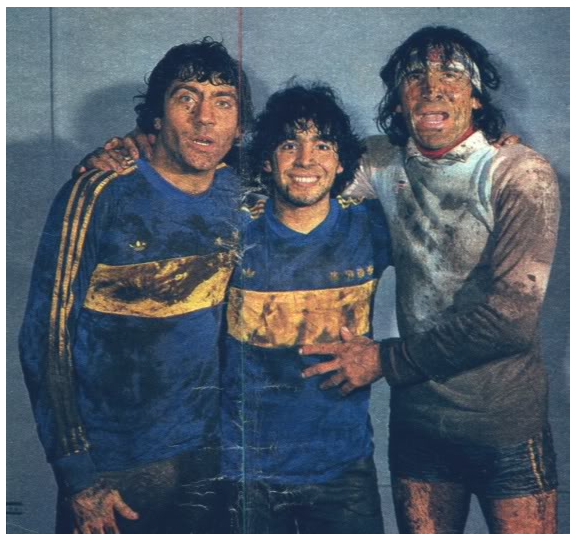Football History: The Sweeper Keeper
Football has evolved in many ways over the course of history. One of the most common ways this has happened is through the positions on the pitch. In this series we will take a deep dive into unique positions on the football pitch and how they have changed over time.
The Origins of Sweeping
Football has always had eccentric goalkeepers such as Argentina’s Hugo Gatti, who was even known as “El Loco” (The Crazy) due to his style of play.
Gatti would often leave his penalty area to take on players, play one-two passes and one time he even scored directly from a goal kick.
Despite Gatti’s great confidence, it was quite rare in the past to see a goalkeeper so comfortable outside his own eighteen yard box.
The Significance of the back-pass law change.
But after the pass back rule was scrapped in 1992, this all changed. Instead of being able to pick-up a pass from a teammate, the goalkeeper was now only able to use his feet. This is where we can find the origins of the modern day “Sweeper Keeper.” The first goalkeeper to operate as a genuine sweeper keeper was Edwin Van de Sarr in 1993.
Van de Sarr was called up to be the starting goalkeeper for Ajax by Louis Van Gaal, who had just dropped former number one Stanley Menzo after a disastrous performance in Europe.
At this stage Ajax were fully indulged in the “Total Football” philosophy created by Johan Cruyff and continued on by Van Gaal, which valued dominating possession of the ball, as well as the space on the pitch.
Here we can see how high a Sweeper Keeper can push up the pitch, basically playing as an 11th outfield player, always being available for a pass if a teammate is under pressure.
The role of a sweeper keeper in this kind of team was to control the space behind the defensive line by pushing up and staying as close to it as possible.
A sweeper keeper also needed to contribute in keeping possession, always being open for a pass and to even help create chances.
To play the sweeper keeper role, a player would need to have great confidence, bravery, be technically sound on the ball and have great positional awareness.
The role has always been around since Van de Saar, but was not used universally in the football world, that is until the 2014 World Cup.
Sweeping in the Modern Game
Germany faced Algeria in a round of sixteen tie at the World Cup in Brazil and this match is famously remembered for Manuel Neuer putting the sweeper keeper role on the map.
Algeria’s game plan was to play long balls in behind the Germany defence for their pacey forwards to run onto as centre-backs Per Mertesacker and Jerome Boateng were not the quickest.
The Algerians did not expect Manuel Neuer to be so aggressive when sweeping.
Neuer made seven clearances against Algeria, six of them being outside his own box.
Neuer touched the ball fifty-nine times against Algeria, twenty-one of those being outside his own area.
Germany were less than impressive in the match, narrowly winning 2-1 after extra-time. If it wasn’t for Neuer, Germany could have easily crashed out of the tournament.
This match changed how the footballing world viewed goalkeepers. Neuer had already been playing this role brilliantly for Bayern Munich under Pep Guardiola, but for the years following this tournament, we began to see more and more sweeper keepers.
How is Sweeping Implemented Now?
The Premier League is now filled with these characters. Alisson for Liverpool, Ederson for Manchester City and David Raya for Arsenal have shown that a lot of top clubs within the game believe in using a goalkeeper to sweep up behind the defence and to act as an extra outfield player.
We have even seen Ederson manage to get multiple assists in the Premier League since joining Man City, playing incredibly accurate long balls all the way up to his forwards to finish.
Ederson’s incredible assist for İlkay Gündoğan. He had the awareness to spot the run in behind the Tottenham defence and had the technical ability to play the pass.
Although the sweeper keeper role is becoming more and more common, we should not underestimate how difficult it can be to master the role. Many have tried the role and failed, but once perfected, this type of player is one of the greatest benefits a team can have on the pitch.



























